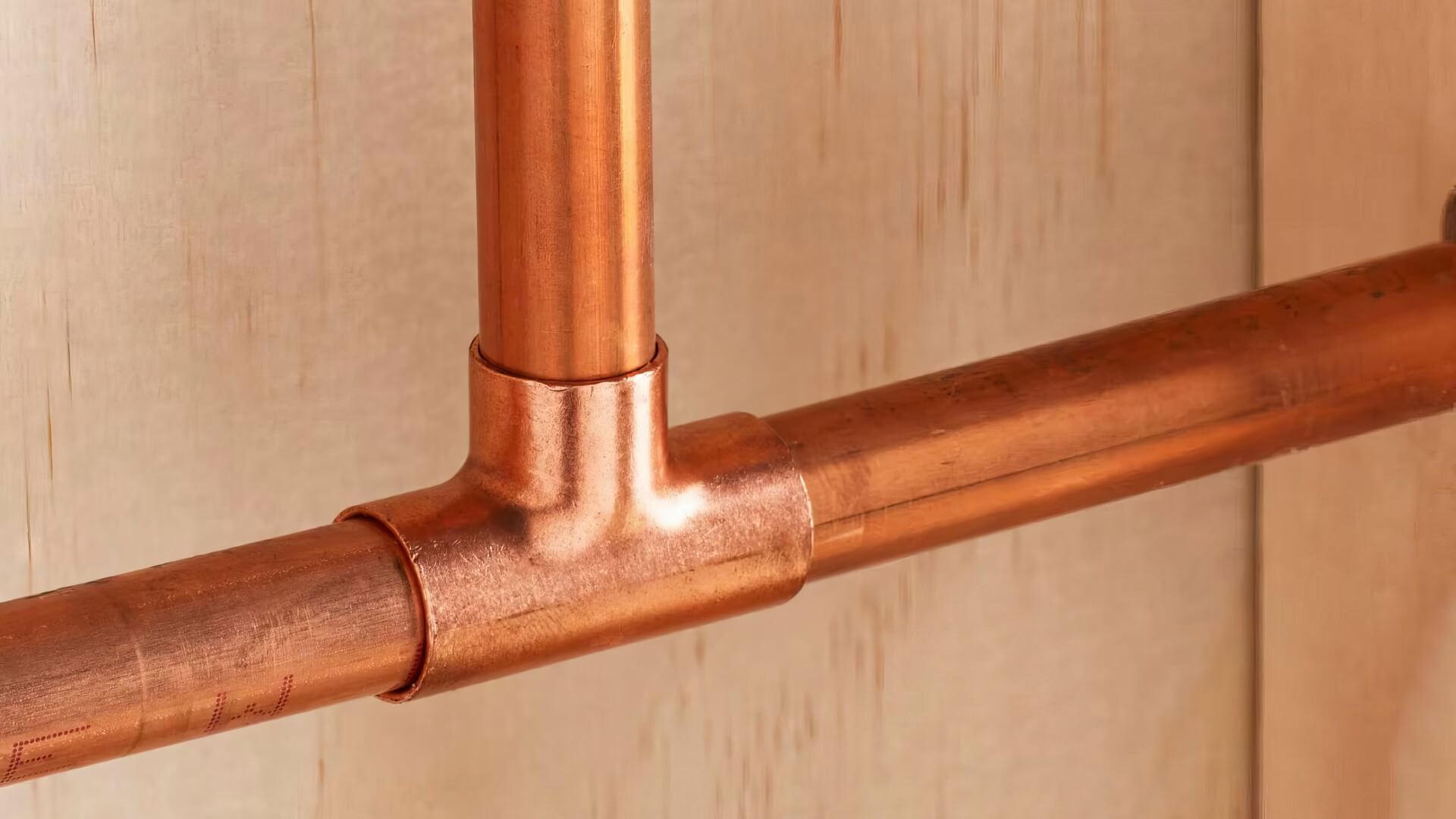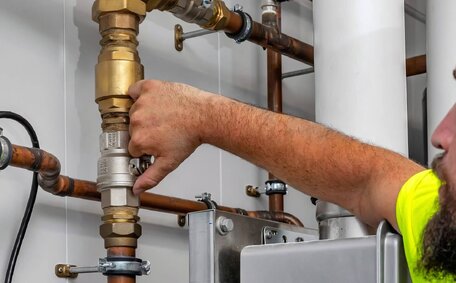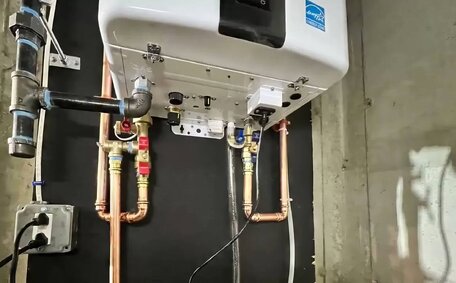Introduction to Pipe Relining
Pipe relining is a cost-effective, trenchless method that rehabilitates damaged drain pipes without the major disruption seen with standard replacements. It involves inserting a structural epoxy resin liner into the existing pipe, which then cures to form a new seamless pipe within the old one, suitable for all types pipe.
This versatile method effectively addresses cracks, leaks, and blockages across various sewer pipe materials such as PVC, cast iron, concrete, and clay. It is an environmentally friendly and efficient solution that restores pipes to full functionality with minimal property disturbance.
A prevalent inquiry regarding pipe relining concerns its efficacy on systems with intricate bends angles. This article from Epping Plumbing Services in Sydney will delve into the capabilities of relining technologies for a variety of materials, including pvc and cast pipes, and offer insights on the expected results, with cost comparisons to traditional pipe replacement.
Challenges of Relining Pipes with Complex Bends and Angles
A sewer line with multiple tight bends, offsets, and angles poses significant relining challenges. Once cured, resin liners become rigid, allowing for precise repair of complex pipe geometries.
There was also a risk of leaving air pockets or an incomplete seal with manual methods.
Recent advancements in Cured-In-Place Pipe (CIPP) technologies enable the relining of even the most complex pipe layouts. These flexible liners are inverted or pulled into place, then expanded and cured, as the pipe relining can form a tight custom fit. The process creates a seamless inner pipe, accomodating a range of diameters from 32 to 300 millimetres.
Leveraging advanced CCTV technology, our plumbers accurately map and repair broken geometries in your sewer system. We carefully select the optimal liner material and process to ensure effective relining of your drains, preventing future leaks or blockages. Reach out and request a quote today for relining your problematic sewer lines.
Assessing Pipe Damage with CCTV Inspections
Prior to relining, our technicians conduct comprehensive CCTV drain inspections to evaluate the pipe’s condition. This involves feeding a high-resolution camera through your pipes to identify any broken or cracked segments, blockages, misalignments or other forms of damage.
The CCTV footage provides detailed imaging of every bend, joint and section of PVC, cast iron, and other materials of pipes. We can accurately measure diameters, map geometries, and evaluate the suitability for epoxy resin relining. Pipes needing replacement are also identified.
For angled pipes, we pay special attention to the severity of offsets and deflections during CCTV inspections. Flexibility is crucial for effectively relining complex pipe alignments. Our relining process uses state-of-the-art CCTV rigs with pan and tilt cameras allowing a flexible all-angle view.
Our CCTV inspections produce high-definition visuals for various pipe sizes, showcasing our proficiency with diverse pipe conditions and diameters. We can even navigate multiple tight bends in tricky pipe layouts. This insight helps us recommend the most suitable trenchless repair method for your specific piping issues.
Specialized Equipment for Navigating Bends
To navigate multiple tight bends in damaged pipes, we use specialised equipment like the FlexiGator robotic cutter. This technology uses flexible heads that can move into damaged pipe areas through 360° bends and lateral connections without getting stuck.
For sites with extreme pipe angles, we utilise a CCTV drain camera to ensure precise application of DC Super Flex Ribbed Liners with thickened walls. Our ultra-flexible epoxy tube liners smoothly contour around bends. We also rely on our Rigid SpinGlass liners for strength when dealing with complex pipe layouts.
Our Hi-Eye Falcon CCTV cameras feature pan and tilt mechanisms as well as laser profiling. This allows accurate assessment of repaired pipe diameters and mapping of the entire drain structure before relining.
Our advanced equipment and expertise enable us to reline pipes of any complexity. Even heritage listed sites with pipe access issues can be tackled thanks to our used trenchless pipe relining methods. Reach out for more details on our comprehensive trenchless pipe repair services.
Pipe Relining Methods for Complex Pipes
When it comes to relining pipes with multiple tight bends or complex geometries, we utilise two key methods - inversion lining and robotic-assisted lining.
Inversion lining is a technique that inverts a liner inside the pipe as it’s introduced into the pipeline, ensuring thorough adhesion to the existing structure. The liner moulds to the pipe’s interior, sealing cracks and forming new, operational channels. It is then cured with hot water or steam to harden.
For extreme pipe angles over 45°, we use our FlexiGator robotic cutter system paired with thick-walled DC Super Flex liners, which are inserted into damaged segments. The FlexiGator cutter head flexes around bends with ease while the ribbed liner material stretches to accommodate angles before curing.
We also rely on lateral launch inversion for connecting pipes or multi-angled junctions. Our Hi-Eye Falcon CCTV rig provides exact pipe mapping so technicians can pinpoint launch points to feed liners through from the side.
While some limitations exist on navigating certain angles, advancements now enable epoxy relining techniques to be used repair pipes once deemed too intricate. Our crew handles any residential or commercial relining job - contact Epping Plumbing to schedule an obligation-free quote.
Inversion Lining Technology
Inversion lining is an advanced method that allows for the relining of pipes with multiple bends and angles without the need for excavation. It involves carefully turning a resin-impregnated liner inside out as it passes through the pipe, thus creating new interior surfaces.
As the flexible liner stretches and bends, it takes on the exact shape of the pipe’s interior, addressing any existing cracks and leaks. This method effectively seals cracks and bridges gaps, providing a continuous, smooth internal surface. Once in place, hot water, steam, or UV light cures the liner into a rigid, corrosion-resistant pipe.
As the rotated liner navigates each bend, specialised robotic cutters guide it through without snagging or tearing.
Inversion-lining can extend the service life of pipes well beyond traditional methods, often surpassing 50 years. It’s a fraction of the cost of replacing angled pipes and restores structural stability and flow capacity with minimal surface impact.
From heritage restorations to commercial sites, inversion relining handles residential and industrial sewer lines of all sizes and complexity. Contact us today for relining Sydney’s drains, without the mess and disruption of traditional methods.
Robotic-Assisted Pipe Lining
Robotic-assisted pipe lining is an innovative technology that enables the relining of pipes featuring complex bends, multi-angle fittings and tricky configurations.
It relies on advanced robotic cutters like the FlexiGator system that can flex and rotate 360 degrees to navigate tight pipe corners. The cutters guide ultra-flexible epoxy resin tube liners into place.
As the liner passes elbows and angle fittings, the robotic cutter smoothly guides it through without snagging. It maintains liner tension and positioning during installation and curing, enabling a seamless custom fit.
Robotic-assisted lining provides precision control when dealing with heritage pipes or awkward pipe layouts. There is no need for manual liner pushing or complex access chambers.
The robotics analyse pipe dimensions and geometry to tailor the liner to each angle and curve. Together with our specialist operators, complex configurations can be relined for maximum structural renewal and flow capacity.
Contact our team about robotic-assisted relining. We handle residential blocks and large commercial sites across Sydney, with no diggging or destruction required.
Evaluating Longevity of Relined Pipes
When performed correctly by specialists like Epping Plumbing, inversion-lined or robotically installed epoxy resin pipes can last over 50 years even with complex bends and angles.
Contemporary relining methods facilitate the complete structural restoration of impaired drains. The seamless epoxy liner bonds to the interior walls, restoring stability and flow capacity to angled pipes.
Expect more than 25 - 30 years of reliable service from a relined pipe for offset joints and sweeping 90-degree elbows. Multi-angled configurations or lateral connections may shorten this lifespan to 20 years due to potential weak points.
However, periodic CCTV inspections ensure any new damage like cracks or blockages are identified early. Localised spot repairs and re-lining prolong the pipe’s lifespan as needed.
Compared to traditional replacement, inversion-lined pipes provide superior longevity and value. With ever-improving resin formulas and robotics, future technological enhancements will further extend relined pipe durability.
Cost Analysis: Relining vs Replacement
When comparing pipe relining to full replacement, relining is the clear cost-effective choice in most residential and commercial contexts.
Pipe replacement traditionally carries a higher cost, prompting inquiries into the significant savings offered by the more affordable relining process. Angled pipe layouts or multiple junctions can push this over $1000 per metre.
By comparison, epoxy relining using inversion or robotics costs an average of $150 to $250 per metre installed. Complex configurations only slightly increase pricing due to equipment requirements.
For a 20 metre long drain line, replacement would cost $8,000 to $12,000. Relining the same stretch would come to just $3,000 to $5,000 - a 50% to 75% saving!
When considering the added cost of landscaping repairs required after traditional digging and replacement, relining offers even greater savings. Relining circumvents the need for damaging excavation during the installation process.
Furthermore, structurally reinforced pipes require less maintenance compared to newly installed piping. With multi-decade lifespans from relining, there’s no need for costly replacements, making it a reliable and economic pipe reinstatement option.
Enquire about our pipe relining services at Epping Plumbing for your damaged tunnels. Benefit from Sydney’s most extensive warranties and gain peace of mind from our seasoned expertise.
Minimizing Disruption with Pipe Relining
Pipe rehabilitation through relining offers significant advantages for blocked drains, minimising disruption to properties with intricate drainage layouts. The insertion of structural lining materials during the relining of sewer systems obviates the need for disruptive excavations to replace old pipes.
At Epping Plumbing, we commence by using advanced CCTV drain cameras to thoroughly inspect and map out your pipe network, identifying any challenging angles or junctions before injecting high-quality resin. We then use advanced epoxy resin liners that can flex and stretch to accommodate the various pipe bends.
Once in place, these liners are inflated and cured to create a new seamless and tight-fitting pipe inside your existing pipe network. This technique reinstates stability and flow to your drainage system without excavating through gardens, driveways, or concrete surfaces.
Pipe relining offers a repair solution for vintage homes, preserving landscape aesthetics while refurbishing the underlying wastewater system. Commercial sites also benefit as there is no need to close off sections of parking lots or buildings during drain repairs.
With strategic planning, the majority of pipe relining jobs are completed within 1-2 days. This equates to substantial cost savings relative to traditional methods, which can extend pipe replacement over weeks. Productivity for businesses proceeds as usual given minimal interference on-site.
Relining also avoids risky excavation around existing gas, power and water lines on a property. By renewing pipes in-place, there’s no impact on surrounding utilities, structures and landscaping elements after our work is completed.
Contact the professional plumbing team at Epping Plumbing to learn more about minimising disruption with pipe relining across Sydney sites, large and small. With over 25 years of drainage repair expertise, Our expertise ensures we complete the job to the highest standard.






